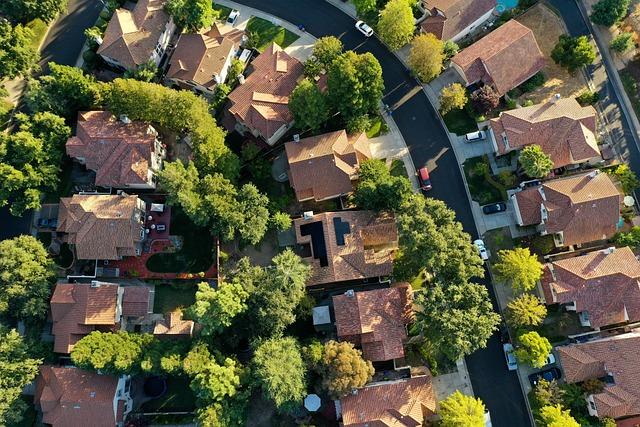As the sun rises each day, it showers the Earth with an abundance of energy, a vast, untapped potential waiting to be harnessed. In a world increasingly turning towards sustainable solutions, solar energy stands as a beacon of hope, offering a cleaner, greener alternative to traditional power sources. However, capturing the sun’s brilliance and transforming it into usable electricity is only part of the equation. The real challenge lies in optimizing the grid infrastructure to seamlessly integrate this renewable resource, ensuring efficiency, reliability, and resilience. This article delves into the intricacies of modernizing our grid systems to accommodate the growing influx of solar power, exploring innovative strategies and technologies that promise to illuminate the path to a sustainable energy future. Join us as we navigate the dynamic intersection of solar energy and grid optimization, where every ray of sunlight holds the promise of progress.
Enhancing Grid Resilience with Advanced Solar Integration
In the quest for a more sustainable energy future, the integration of solar power into our existing grid infrastructure has become a critical focus. To bolster grid resilience and fully harness the potential of solar energy, several innovative strategies can be employed. Firstly, smart inverters can be utilized to enhance the stability and efficiency of solar energy systems. These devices can dynamically adjust power output and provide valuable grid support functions, such as voltage regulation and frequency control.
Moreover, the deployment of energy storage solutions can play a pivotal role in optimizing grid infrastructure. By storing excess solar energy during peak production times, these systems ensure a consistent power supply even when solar generation is low. Key considerations for enhancing grid resilience include:
- Decentralized energy production: Promoting distributed solar installations to reduce transmission losses and enhance local grid stability.
- Advanced monitoring systems: Implementing real-time data analytics to anticipate and respond to grid disturbances proactively.
- Demand response programs: Encouraging consumers to adjust their energy usage patterns to align with solar production peaks.
Through these strategic enhancements, solar energy can be seamlessly integrated into the grid, paving the way for a robust and sustainable energy future.

Streamlining Energy Storage for Optimal Solar Utilization
To harness the full potential of solar energy, it’s crucial to enhance the grid’s energy storage capabilities. Advanced battery technologies like lithium-ion and flow batteries are leading the charge in storing surplus solar power efficiently. These systems not only reduce reliance on non-renewable energy sources but also provide a reliable backup during peak demand. By integrating smart energy management systems, the grid can dynamically allocate stored energy, ensuring a seamless power supply to end-users.
Optimizing grid infrastructure also involves embracing innovative energy storage solutions such as:
- Virtual Power Plants (VPPs): Aggregating decentralized energy resources to operate as a unified power source.
- Pumped Hydro Storage: Utilizing gravitational potential energy for large-scale storage.
- Compressed Air Energy Storage (CAES): Storing energy by compressing air in underground caverns.
By implementing these solutions, the grid can accommodate fluctuations in solar energy generation, enhancing overall stability and efficiency.

Smart Grid Technologies: Elevating Solar Energy Management
In the quest for efficient solar energy management, smart grid technologies are transforming how energy is distributed and consumed. By integrating advanced metering infrastructure, these grids can dynamically adjust energy flows based on real-time data, ensuring that solar power is utilized optimally. This not only reduces wastage but also enhances the reliability of the energy supply. Implementing such technologies involves leveraging a network of sensors and automated control systems that can communicate seamlessly, adjusting to fluctuations in solar power generation with precision.
Key components in optimizing grid infrastructure include:
- Advanced Metering Infrastructure (AMI): Facilitates two-way communication between utilities and consumers, enabling real-time energy usage tracking.
- Energy Storage Solutions: Helps in storing excess solar energy for use during peak demand times, balancing supply and demand efficiently.
- Demand Response Programs: Incentivize consumers to adjust their energy usage during peak times, aiding in grid stability.
- Grid Automation: Employs AI and machine learning to predict and respond to energy needs dynamically.
By embracing these technologies, we can significantly enhance the capacity and resilience of our grid systems, paving the way for a sustainable energy future.

Regulatory Frameworks and Policies for Sustainable Solar Grid Expansion
The effective integration of solar energy into the grid infrastructure necessitates a robust regulatory framework that encourages sustainable practices while addressing potential challenges. Governments and energy authorities must craft policies that not only support the growth of solar power but also ensure its reliability and efficiency. Key areas of focus include:
– Grid Interconnection Standards: Establishing uniform standards for solar installations to connect to the grid ensures safety and compatibility. These standards must be updated regularly to accommodate technological advancements in solar technology.
– Incentive Programs: Offering tax credits, rebates, or feed-in tariffs can motivate both individuals and businesses to invest in solar power, accelerating its adoption and expansion.
– Energy Storage Regulations: As solar energy production is variable, effective storage solutions are essential. Regulations should support the development and integration of innovative storage technologies, ensuring a stable and consistent energy supply.
– Demand Response Policies: Implementing demand response strategies can help balance the grid during peak solar production times, preventing overloads and maintaining efficiency.
In addition to these policies, cross-border collaboration can play a crucial role in optimizing grid infrastructure. By aligning regulations and sharing best practices internationally, countries can enhance their solar grid expansion efforts, fostering a global shift towards sustainable energy.
Key Takeaways
As the sun sets on our exploration of optimizing grid infrastructure for solar energy, it’s clear that the journey towards a sustainable future is illuminated by innovation and collaboration. By harnessing advanced technologies, implementing smart grid solutions, and fostering a synergy between policy and practice, we pave the way for a more resilient and efficient energy landscape. As we stand on the brink of this renewable revolution, let us continue to challenge the limits of possibility, transforming the way we power our world, one solar panel at a time. The horizon is bright, and with each step forward, we bring the promise of a greener tomorrow ever closer to reality.

































